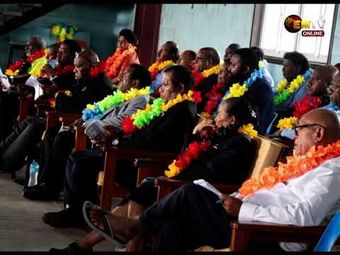Connect with University of Waikato
Contact this content partner to get more information about this item.
Understanding the teacher upgrade programme in Samoa: Contextual challenges for in-service teachers, school principals and Ministry personnel
- Description:
- This article discusses the challenges involved in Samoa’s teacher upgrade programme. The teacher upgrade initiative came about because of the Samoan Ministry of Education, Sports and Culture’s aim for all in-service primary and secondary teachers to hold a Bachelor of Education degree. However, challenges including time scheduling, teachers’ wider responsibilities, unsupportive school principal...
- Display date:
- 2019
- Location:
- Samoa
- Format:
- Journal article
- Collections:
- ResearchCommons@Waikato
- Content partner:
- University of Waikato
- Availability:
- Not specified
-
Copyright status: All rights reservedFind out more about what you are able to do with this itemThis item is all rights reserved, with means you'll have to get permission from University of Waikato before using it. For more information, please see our use and reuse page.More informationUniversity of Waikato has this to say about the rights status of this item:
© 2021 Pacific-Asian Education Journal. Used with permission.
What can I do with this item?Non-infringing useNZ copyright law does not prevent every use of a copyright work, and this item may be hosted by an international institute or organisation. You should consider what you can and cannot do with a copyright work.No sharingYou may not copy and/or share this item with others without further permission. This includes posting it on your blog, using it in a presentation, or any other public use.No modifyingYou are not allowed to adapt or remix this item into any other works.No commercial useYou may not use this item commercially.
Related items
Welcome and warm Pasifik greetings
The information on this site has been gathered from our content partners.
The names, terms, and labels that we present on the site may contain images or voices of deceased persons and may also reflect the bias, norms, and perspective of the period of time in which they were created. We accept that these may not be appropriate today.
If you have any concerns or questions about an item, please contact us.
